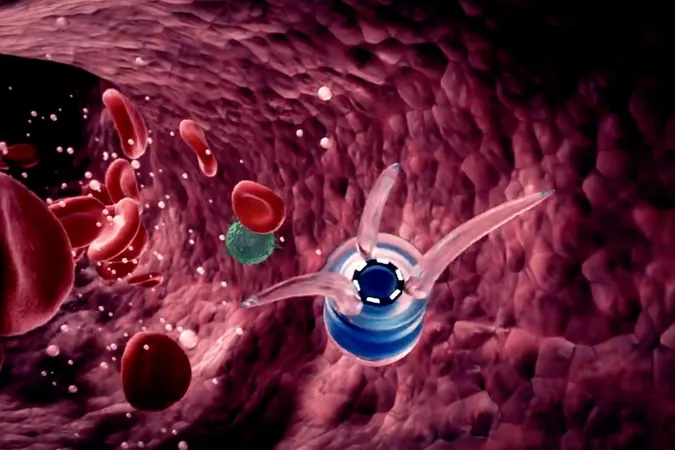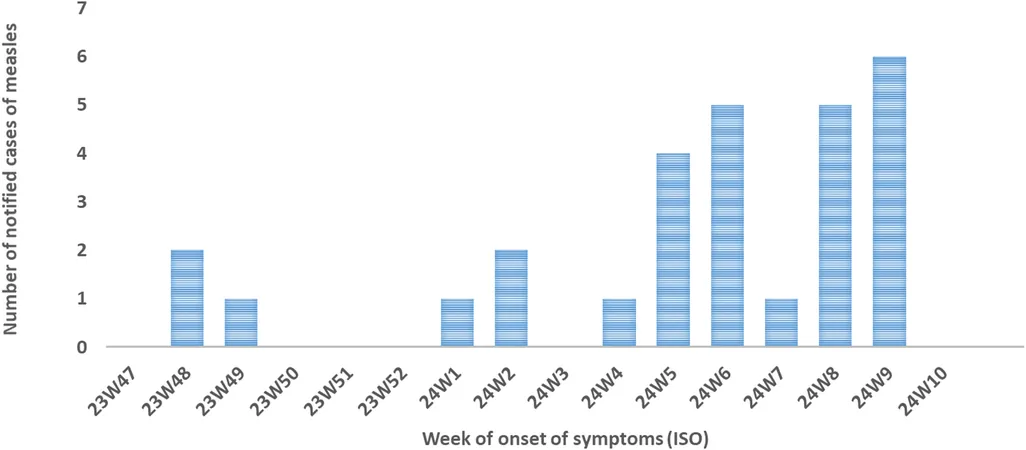
Revolutionary Imaging Technique Unveils How Obesity Drug Tirzepatide Targets Cells
2025-08-26
Author: John Tan
Groundbreaking Discovery in Obesity and Diabetes Treatments
In a monumental leap for diabetes and obesity management, scientists have unveiled an innovative imaging technique that tracks how dual agonist medications like tirzepatide penetrate and interact with crucial cells in the pancreas and brain. This exciting research, published in the esteemed journal Nature Metabolism, promises to pave the way for more effective treatments in the fight against these chronic conditions.
Illuminating Drug Pathways with Fluorescent Probes
A collaborative team of international researchers has engineered fluorescent probes that shed light on the behavior of tirzepatide, a powerful drug that activates both the GLP-1R and GIPR hormone receptors, responsible for regulating blood sugar and appetite. Dubbed daLUXendins, these chemical probes enable scientists to visualize the journey of these drugs as they bind to specific cell types throughout the body.
Targeting Metabolic Pathways Like Never Before
Tirzepatide, marketed as Mounjaro or Zepbound, represents a cutting-edge class of therapies known as dual agonists, which stimulate both the glucagon-like peptide-1 receptor (GLP-1R) and the glucose-dependent insulinotropic polypeptide receptor (GIPR). These receptors play a vital role in appetite regulation, found in both the pancreas and the brain.
"Our new dual fluorescent probes now allow us to monitor these receptors simultaneously in living tissues, helping to identify which specific cells respond to treatment," explains Professor David Hodson from the University of Oxford, a co-author of the study. This breakthrough tool significantly enhances our understanding of how these dual agonists achieve their metabolic impacts.
Decoding Drug Action in the Brain
Lead researcher Dr. Johannes Broichhagen from Leibniz-FMP expressed great enthusiasm about the potential of the daLUXendins: "We are especially focused on the dynamic interplay of these peptides." Using advanced super-resolution microscopy, the team has successfully tracked how tirzepatide engages with beta, alpha, and delta cells in the pancreas, unveiling its extensive metabolic effects.
Moreover, the team observed how the drug reaches brain areas responsible for appetite control, particularly engaging with specialized cells known as tanycytes that relay nutrient information to appetite-regulating regions.
Charting the Future of Treatment
The study reveals that receptors form tiny clusters or 'nanodomains' in the pancreas, potentially amplifying the signals generated by dual agonists. Although the research is based on mouse models using fluorescent versions of tirzepatide, the authors believe this method can be adapted for human studies and extended to explore new triple agonists that target glucagon receptors as well.
This research not only highlights the success of dual agonists but also opens intriguing questions. What if drugs could be designed to enhance access to brain regions? How do new triple agonists with additional glucagon functionality operate?
Professor Hodson leaves us with this thought: "The next frontier will be examining how these insights apply to triple agonists, which represent an even more potent approach." Stay tuned as the journey to more effective obesity and diabetes treatments unfolds!


 Brasil (PT)
Brasil (PT)
 Canada (EN)
Canada (EN)
 Chile (ES)
Chile (ES)
 Česko (CS)
Česko (CS)
 대한민국 (KO)
대한민국 (KO)
 España (ES)
España (ES)
 France (FR)
France (FR)
 Hong Kong (EN)
Hong Kong (EN)
 Italia (IT)
Italia (IT)
 日本 (JA)
日本 (JA)
 Magyarország (HU)
Magyarország (HU)
 Norge (NO)
Norge (NO)
 Polska (PL)
Polska (PL)
 Schweiz (DE)
Schweiz (DE)
 Singapore (EN)
Singapore (EN)
 Sverige (SV)
Sverige (SV)
 Suomi (FI)
Suomi (FI)
 Türkiye (TR)
Türkiye (TR)
 الإمارات العربية المتحدة (AR)
الإمارات العربية المتحدة (AR)